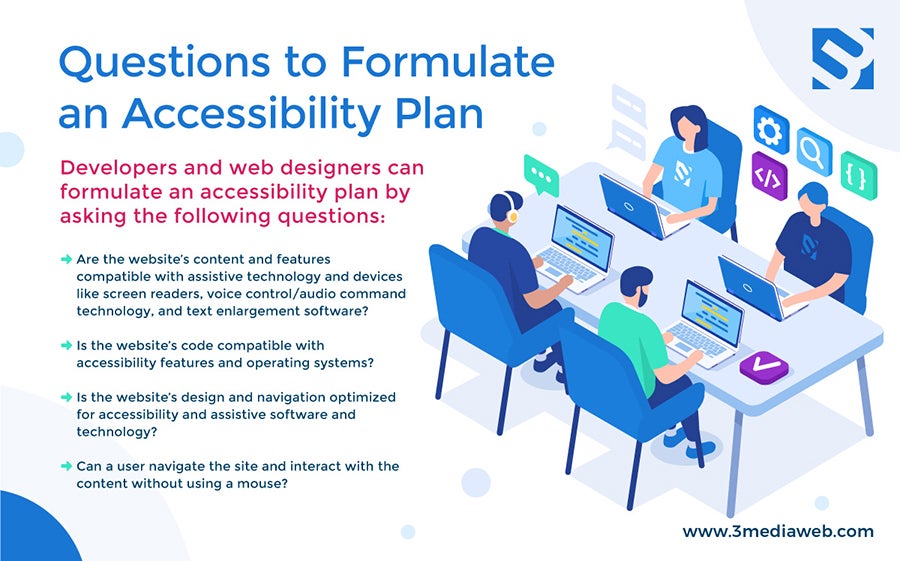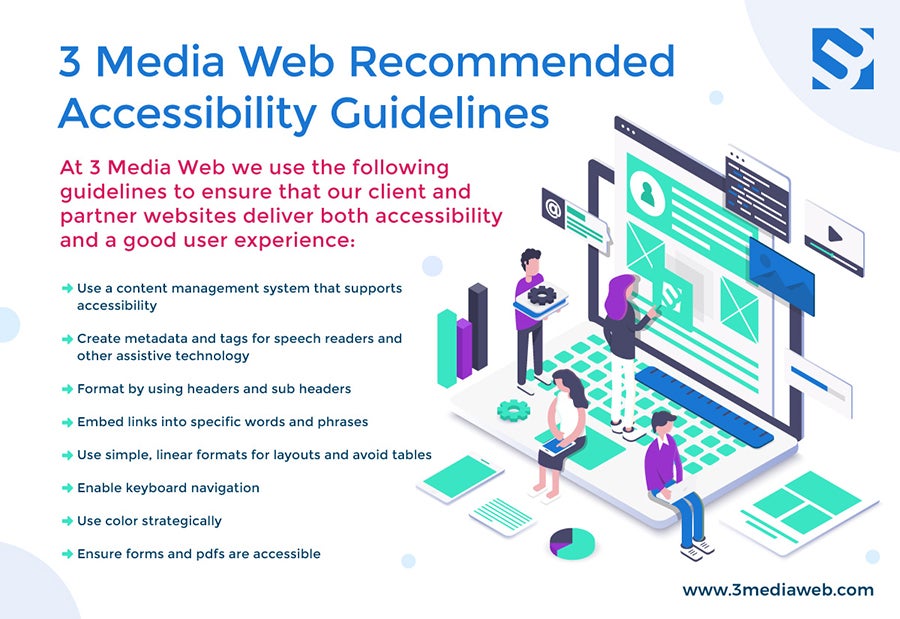For brick and mortar businesses, ensuring that customers with disabilities and mobility issues can fully and safely access their facilities has been standard practice for some time, thanks to the Americans with Disabilities Act (ADA). But as with other aspects of the law, the digital space has had to play catch up in the last few years, and the laws governing website accessibility are still evolving.
According to the Centers for Disease Control and Prevention (CDC), at least one out of four Americans (over 60 million people) suffer from a disability that impacts their mobility and/or quality of life. Over three million Americans over age 40 are either legally blind, or living with some degree of visual impairment.
Even minor visual impairments or mobility problems, like being color blind or unable to use a mouse, can make it difficult if not impossible to use certain websites. As more and more business is conducted online, from shopping to applying for and performing certain jobs, business owners and brands of all sizes and industries need to prioritize accessibility in their web design.
Updates to the ADA’s Web Accessibility Rules
The laws may still be evolving, but if your website is not accessible for users with disabilities and impairments, you’re not just running the risk of losing out on millions of potential customers, users, and job candidates. You also run the risk of legal liabilities and lawsuits. According to data on web accessibility related lawsuits, filings jumped over 18% from the previous year from just over 800 lawsuits in 2017 to over 2000 cases in 2018.
One of the highest profile cases to date involves Domino’s Pizza, who were sued by a visually impaired customer after he couldn’t place an order through their app, even with the help of screen reading software. Although the lawsuit was originally filed in 2016, the case recently made national headlines when the Supreme Court declined Domino’s request for an appeal, effectively sending the case to trial.
Website Accessibility in Practice
Despite the fact that the accessibility laws governing digital content are still evolving, lawsuits against websites that are deemed to be in violation of the ADA for failing to make their content fully accessible (in the public and private sector) are on the rise, and shot up by a whopping 200% in 2018 alone. A case involving the University of California – Berkeley (UC Berkeley) a few years ago demonstrates the need to take accessibility into consideration when designing online content. The Department of Justice found that UC Berkeley was in non-compliance of a section of the ADA because the content on their YouTube channel and online courses that were made available to the public did not include closed captioning, and were not accessible to users with hearing disabilities and impairment.
Just like buildings, public spaces, and stores in the real world, websites need to be designed so that customers and users with disabilities have equal access to the content on the website, whether it’s the text in a blog post or article, infographics and other visual content, and videos and audio files.
How Accessibility Helps Your Digital Brand
Making sure that a website is accessible is about more than avoiding potential lawsuits. A fully accessible website is a necessity for modern businesses for everything from selling products and services, to recruiting and hiring qualified workers. This is especially true in the manufacturing industry, where companies face a shortage of over two million skilled workers in the next decade according to the Manufacturing Institute. According to current data, “The lack of qualified talent could cause the U.S. to lose $48 billion in manufacturing GDP in 2018, and this is expected to grow to $454 billion by 2028.”
As the American Marketing Association points out, accessible websites have a number of benefits including better overall performance, higher conversion rates, increased search engine rankings, and wider social sharing among many others.
Making Websites Accessible
Many users with disabilities rely on assistive technology and software that helps them to read text, listen to audio files, and navigate websites without the use of a mouse. To be fully accessible, websites need to be designed with all of these elements in mind (it’s not as difficult as it sounds).
Many of the elements that go into making a website accessible already overlap with general best practices for user experience design and SEO (search engine optimization). Something as simple as the choice of color, font, creating alt tags, and adding captioning on a web page or video can make all the difference in terms of whether someone with a visual, auditory, or cognitive impairment can access and understand the content, make a purchase, or apply for a job.
Here are some tips and best practices to help you get started evaluating how accessible and ADA compliant your website is, and what you can do to bring your business up to speed and help make the internet open and accessible for everyone.



